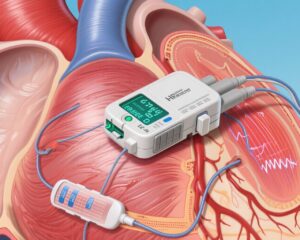Highlight
– Fertility-preserving hormonal therapy usage for early-stage endometrial cancer rose from 5.2% in 2004 to 13.8% in 2020.
– For women under 40, 5-year survival rates were comparable between hormonal therapy and hysterectomy.
– Women aged 40-49 receiving hormonal therapy experienced significantly worse survival than those undergoing hysterectomy.
– Approximately 20% of patients initially treated with hormonal therapy ultimately required hysterectomy during first-line treatment.
Study Background and Disease Burden
Endometrial cancer is the most common gynecologic malignancy in developed countries and often diagnosed at an early stage. Standard treatment typically involves hysterectomy, which precludes future fertility. However, a growing proportion of patients delay childbearing and seek fertility preservation, creating an urgent clinical need for effective non-surgical treatment options. Hormonal therapy, predominantly progestin-based, offers a fertility-sparing alternative for select early-stage, low-grade endometrial cancers. Yet, comprehensive survival data stratified by age remain limited. This study addresses this gap by comparing survival outcomes associated with fertility-preserving hormonal therapy versus hysterectomy across defined age groups.
Study Design
This retrospective cohort study analyzed 15,849 women diagnosed with clinical stage I endometrial cancer from 2004 to 2020 using the US National Cancer Database, encompassing data from over 1500 Commission on Cancer-accredited facilities. Of these, 14,662 (92.5%) underwent primary hysterectomy, and 1,187 (7.5%) received fertility-preserving hormonal therapy, primarily progesterone-based. Patients were stratified into two age groups: under 40 years and 40-49 years. Propensity score matching was utilized to balance baseline characteristics and reduce confounding when comparing survival between treatments.
The primary endpoint was overall survival, evaluated at 2, 5, and 10 years post-treatment. Median follow-up was 59.5 months. Treatment intervals were defined as days from diagnosis to initiation of therapy (hysterectomy or hormonal therapy). Detailed analysis also accounted for patients switching from hormonal therapy to hysterectomy during first-line treatment.
Key Findings
The study revealed a significant increase in fertility-preserving hormonal therapy utilization over the 16-year period, reflecting evolving treatment preferences and patient demographics.
In patients younger than 40 years, 5-year overall survival rates were nearly identical between hysterectomy and hormonal therapy groups: 98.5% (95% CI, 97.2%–99.2%) versus 98.2% (95% CI, 96.8%–99.0%), respectively. The hazard ratio (HR) for death was 1.00 (95% CI, 0.50–2.00), indicating no statistically significant difference in mortality.
Conversely, among patients aged 40-49 years, hormonal therapy was associated with markedly worse survival. The 5-year survival rate for hormonal therapy recipients was 90.4%, compared to 99.4% in those undergoing hysterectomy, corresponding to a HR of 4.94 (95% CI, 1.89–12.91). This increased mortality risk was statistically significant, underscoring a notable age-dependent disparity.
Overall survival analysis of all patients demonstrated 5-year survival rates of 98.5% (95% CI, 97.3%–99.2%) for hysterectomy and 96.8% (95% CI, 95.3%–97.8%) for hormonal therapy (HR 1.84; 95% CI, 1.06–3.21).
Furthermore, among those initially receiving hormonal therapy, 206 (19.5%) ultimately progressed to hysterectomy during first-course management, with 63.3% undergoing surgery within three months from hormonal treatment initiation. This indicates a substantial proportion of hormonal therapy patients may require definitive surgical intervention due to treatment failure or progression.
Expert Commentary
The findings elucidate critical nuances in the application of fertility-preserving hormonal therapy for early-stage endometrial cancer. Comparable survival in women under 40 supports the judicious use of hormonal therapy to safeguard fertility without compromising oncologic outcomes. However, the increased mortality risk observed in women aged 40-49 necessitates cautious patient selection and underscores the potential limitations of hormonal therapy in this demographic.
Biologically, age-related differences in tumor biology, hormone receptor expression, and host factors may influence therapy responsiveness and progression risk. Moreover, delayed surgical intervention following hormonal therapy failure may impact survival adversely in older patients. These considerations argue for rigorous surveillance protocols and shared decision-making incorporating age, reproductive goals, and tumor characteristics.
Study limitations include its retrospective design, potential residual confounders despite propensity matching, and lack of granular data on hormonal therapy regimens and adherence. Additionally, fertility outcomes post-treatment were not reported, an essential factor in evaluating therapy benefits.
Current guidelines cautiously endorse fertility-sparing hormonal therapy for carefully selected young patients with grade 1 endometrioid adenocarcinoma confined to the endometrium. This study reinforces those recommendations and advocates heightened caution for patients approaching their fifth decade.
Conclusion
This significant, large-cohort analysis demonstrates that fertility-preserving hormonal therapy for early-stage endometrial cancer yields oncologic outcomes comparable to hysterectomy in women younger than 40 years. However, in women aged 40-49 years, hormonal therapy confers a substantially increased risk of mortality, suggesting that hysterectomy remains the gold standard in this age group. Clinicians should carefully weigh age-related survival data, disease characteristics, and patient fertility desires when considering hormonal therapy. Further prospective studies are warranted to optimize treatment protocols, improve risk stratification, and evaluate fertility outcomes comprehensively.
References
Suzuki Y, Huang Y, Xu X, Ferris JS, Elkin EB, Kong CY, Myers ER, Saji H, Miyagi E, Havrilesky LJ, Blank SV, Hershman DL, Wright JD. Survival After Fertility-Preserving Hormonal Therapy vs Hysterectomy for Early-Stage Endometrial Cancer. JAMA Oncol. 2025 Aug 28:e252761. doi:10.1001/jamaoncol.2025.2761. Epub ahead of print. PMID: 40875243; PMCID: PMC12395355.



